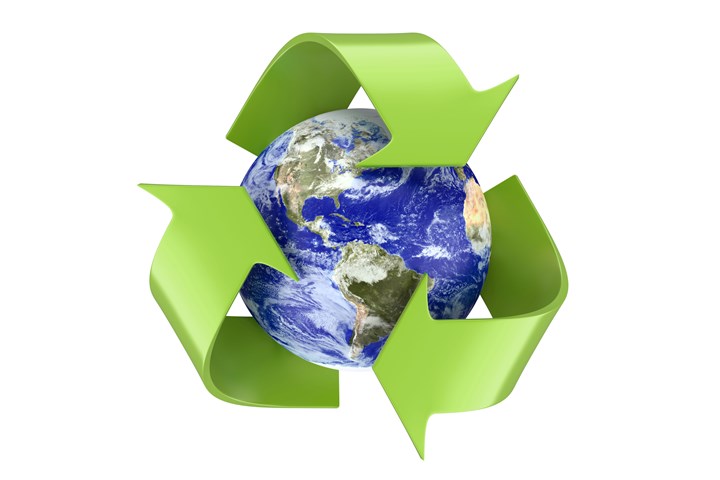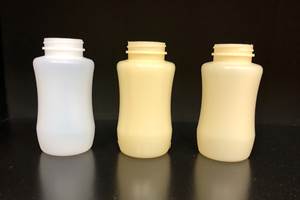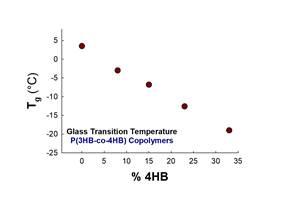What’s Your Sustainability Plan?
If you don’t have one, you should think about it. There are many ways beyond using recycled materials that a processor can make its facility more planet-friendly.

It was about 10 years ago; maybe 15 … time flies by so fast. I was having dinner with a sales executive from an injection molding machine builder in Leominster, Mass. It was during the since-shuttered MassPlastics show in Fitchburg, Mass. The was a new buzzword that was making the rounds in plastics circles, and we were talking about it.
This particular sales exec is a colorful fellow not shy about expressing opinions. “Sustainability is a big issue our industry is going to be dealing with for years to come,” he told me. “You wait and see.”
I was dubious. Actually, I thought he was flat-out wrong. “It’s the flavor of the month,” I replied, “and as sure as I’m sitting here, we’ll be talking about something else next time we have dinner.”
Well, I whiffed on that one. And that’s a good thing, because it means our industry is taking steps in its manufacturing operations to be as efficient and resource-friendly as possible. That was one of the many takeaways I had after visiting Pregis Performance Flexible’s spanking-new plant in Anderson, S.C. (see cover story, p. 38). All too often, I think we equate sustainability with recycling. In fact, sustainability is the destination, and recycling is one of the many paths to get there.
Pregis left no stone unturned in designing this plant with sustainability at the forefront. The plant in Anderson complies with LEED (Leadership in Energy and Environmental Design) standards for all appropriate materials. Building materials were specifically selected to cut down on environmental impact of maintenance and upkeep. The plant was built with water- and power-conserving measures; there are skylights and bright reflective paint to reduce dependence on artificial light sources. No single-use water bottles are provided at the plant.
Measures were also taken to equip the plant with energy-efficient lighting and equipment, automated HVAC and auto-shutdowns for electronics, and other conservation best practices. They ship products to customers without pallets.
On Pregis’ website, it refers to its sustainability program, which is calls 2K30. “Sustainability is more than the products and materials we use. It’s a value system that impacts everything we do. At Pregis, we don’t just reduce, reuse and recycle—we use our position to lead the way to a circular economy that puts people and the planet first. Our journey to 2K30 is our part to protect and preserve our planet for generations to come, and we invite all of our partners, customers, and distributors to take it with us.”
The company put ambitious goals in place that it aims to achieve by 2030. These include reducing greenhouse-gas emissions by 25%; making 100% of its products recyclable, reusable, or with a minimum 30% reduction in new fossil-based ingredients; achieving 100% product and process waste reduction at its facilities globally; and investing $15 million in circular, scalable, and sustainable material, process, and waste solutions globally.
Now Pregis is a large packaging company that participates in many markets with plants all over the world. Likely you’re thinking all big companies with lots of plants have the time and resources to do this. But regardless of how many plants and business units a company has, the reality is that plans like this have to be executed one facility at a time. So if you have one plant, or two or three, you can do it too. At the end of the day, it all matters.
Related Content
Foam-Core Multilayer Blow Molding: How It’s Done
Learn here how to take advantage of new lightweighting and recycle utilization opportunities in consumer packaging, thanks to a collaboration of leaders in microcellular foaming and multilayer head design.
Read MoreHow to Extrusion Blow Mold PHA/PLA Blends
You need to pay attention to the inherent characteristics of biopolymers PHA/PLA materials when setting process parameters to realize better and more consistent outcomes.
Read MoreNPE2024 Wrap-Up: Sustainability Dominates Show Floor News
Across all process types, sustainability was a big theme at NPE2024. But there was plenty to see in automation and artificial intelligence as well.
Read MoreFilm Extrusion: Boost Mechanical Properties and Rate of Composting by Blending Amorphous PHA into PLA
A unique amorphous PHA has been shown to enhance the mechanical performance and accelerate the biodegradation of other compostable polymers PLA in blown film.
Read MoreRead Next
Lead the Conversation, Change the Conversation
Coverage of single-use plastics can be both misleading and demoralizing. Here are 10 tips for changing the perception of the plastics industry at your company and in your community.
Read MorePeople 4.0 – How to Get Buy-In from Your Staff for Industry 4.0 Systems
Implementing a production monitoring system as the foundation of a ‘smart factory’ is about integrating people with new technology as much as it is about integrating machines and computers. Here are tips from a company that has gone through the process.
Read MoreBeyond Prototypes: 8 Ways the Plastics Industry Is Using 3D Printing
Plastics processors are finding applications for 3D printing around the plant and across the supply chain. Here are 8 examples to look for at NPE2024.
Read More






















